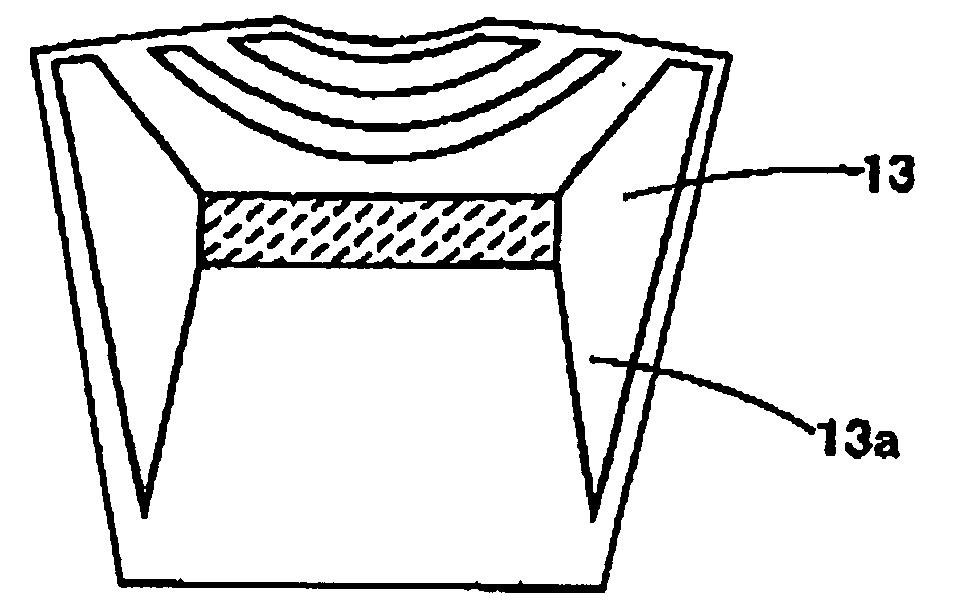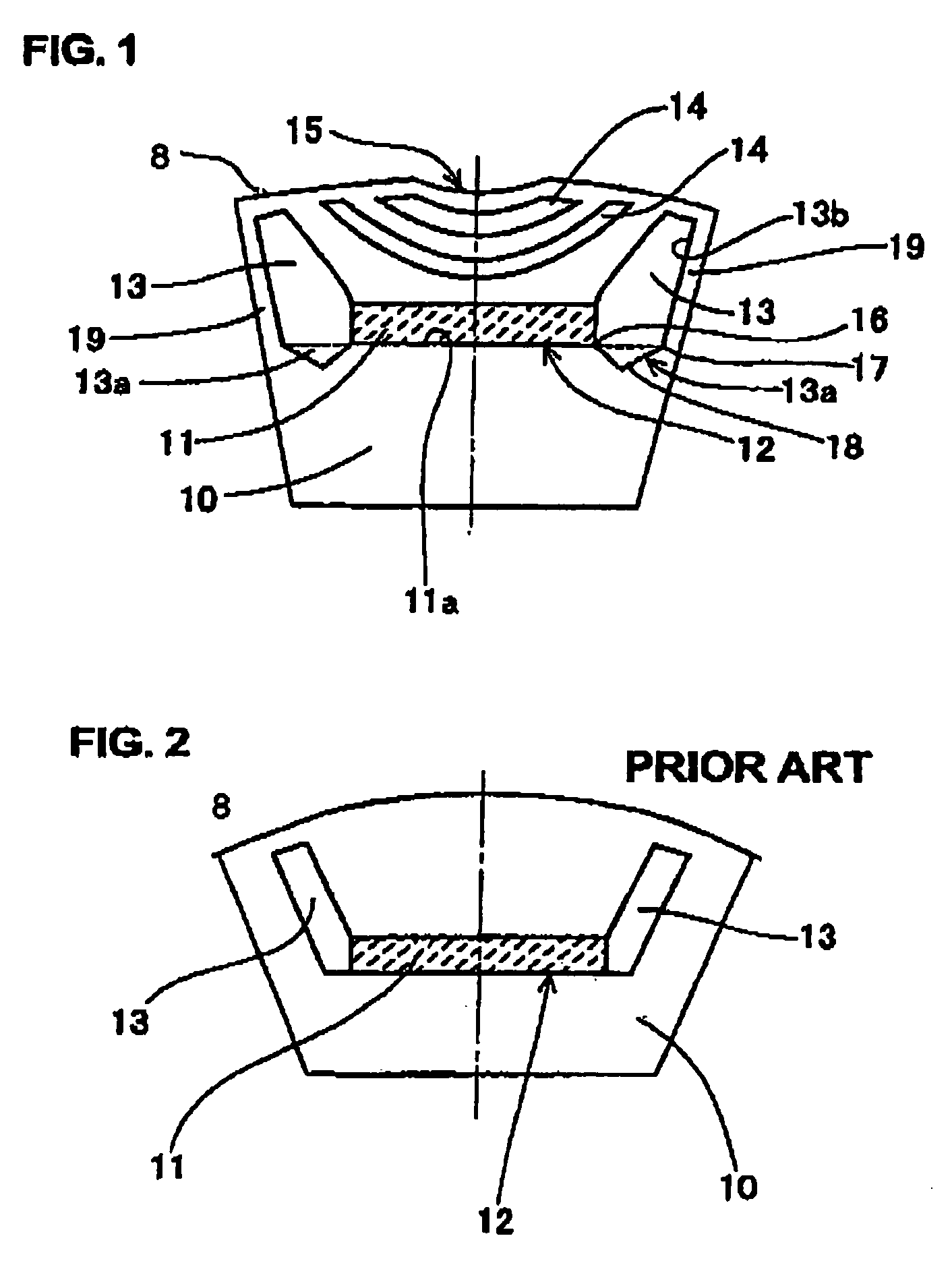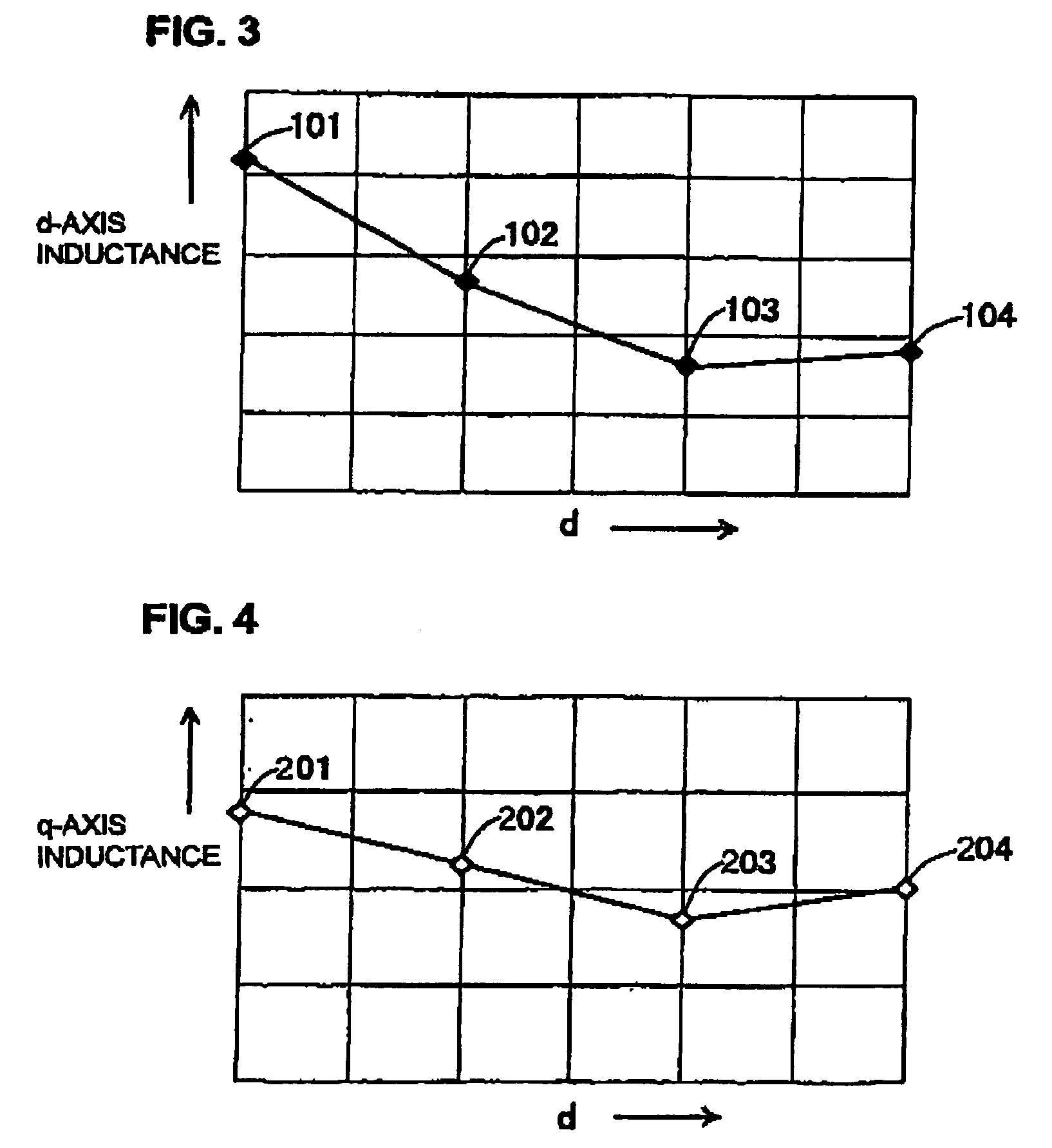Internal permanent magnet rotor having improved configuration of magnetic flux barriers
a technology of internal permanent magnets and rotors, which is applied in the direction of magnetic circuit rotating parts, dynamo-electric machines, magnetic circuit shape/form/construction, etc., can solve the problems of increasing the manufacturing cost of such machines, increasing the total cost of the permanent magnets used in each machine by comparison with that of a usual type of ipm rotary electric machin
- Summary
- Abstract
- Description
- Claims
- Application Information
AI Technical Summary
Benefits of technology
Problems solved by technology
Method used
Image
Examples
first embodiment
[0048] A first embodiment of a rotor for an IPM rotary electric machine is shown in FIG. 1, which is a partial cross-sectional view perpendicular to the direction of the rotor axis. This shows a portion of the rotor corresponding to one pole pitch, and in particular shows one of a plurality of implanted permanent magnets of the rotor. In FIG. 1, numeral 10 denotes the rotor core, which is formed of stacked laminations of magnetic material, numeral 11 denotes a magnet accommodation cavity having a permanent magnet 12 contained therein, with the magnet accommodation cavity 11 and permanent magnet 12 each being of oblong rectangular shape. Numerals 13 and 23 denote two flux barriers that are located respectively extending circumferentially from opposing sides of the magnet accommodation cavity 11, in the clockwise direction and in the anticlockwise direction respectively. Numerals 14, 24 denote flux barriers, in the form of lens-shaped slits having radially opposed faces that are arc-s...
PUM
 Login to View More
Login to View More Abstract
Description
Claims
Application Information
 Login to View More
Login to View More - R&D
- Intellectual Property
- Life Sciences
- Materials
- Tech Scout
- Unparalleled Data Quality
- Higher Quality Content
- 60% Fewer Hallucinations
Browse by: Latest US Patents, China's latest patents, Technical Efficacy Thesaurus, Application Domain, Technology Topic, Popular Technical Reports.
© 2025 PatSnap. All rights reserved.Legal|Privacy policy|Modern Slavery Act Transparency Statement|Sitemap|About US| Contact US: help@patsnap.com



